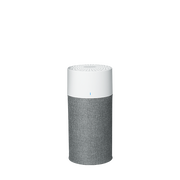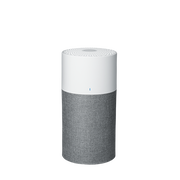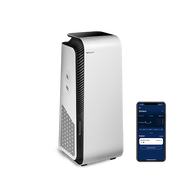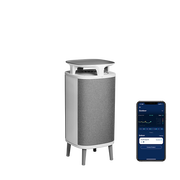
Air purifiers & filters for pollen allergy
Pollen allergies, also known as hay fever, affect millions of people worldwide. These allergies occur when the immune system overreacts to the presence of pollen in the air, leading to symptoms such as sneezing, runny nose, and itchy eyes. In severe cases, pollen allergies can also cause asthma and eczema flare-ups.
Pollen is a fine, powdery substance, typically yellow, comprised of pollen grains, which are carried through the air. Pollen contributes to cross-pollination of trees, grasses and weeds.
Symptoms of pollen allergies
The most common symptoms of pollen allergies include:
- Sneezing
- Runny nose
- Itchy eyes
- Coughing or wheezing
- Itchy throat
- Fatigue
More severe pollen allergy symptoms may include:
- Headaches
- Sweat
- Pain due to blocked sinuses
- Loss of smell or taste
- Insomnia
People who suffer from pollen allergies also have an increased risk of developing asthma. cause hives and eczema.

Causes of pollen allergies
Pollen allergies are caused by the immune system overreacting to the presence of pollen in the air. When the immune system recognizes pollen as a foreign invader, it releases histamine and other chemicals to fight off the perceived threat. This leads to the symptoms of an allergic reaction.
Pollen allergies can be triggered by a variety of pollens, including tree, grass, and weed pollens. The severity of symptoms can vary depending on the type of pollen and the individual's sensitivity to it.
Diagnosis and treatment of pollen allergies
If you suspect that you have a pollen allergy, it is important to see an allergist for proper diagnosis and treatment. An allergist can perform skin tests or blood tests to determine the specific allergens that are causing your symptoms.
Once the allergens have been identified, treatment options can include:
- Allergy shots (immunotherapy)
- Oral antihistamines
- Nasal sprays
- Decongestants
- Steroid creams
- Leukotriene modifiers
It's also important to limit exposure to pollen by staying indoors on high pollen count days, keeping windows closed, and using air purifiers.
In addition, using a high-efficiency particulate air (HEPA) filter in your home and car can help to remove pollen and other allergens from the air.
Prevention of pollen allergies at home
Prevention of pollen allergies involves avoiding exposure to pollens and other allergens as much as possible. Pollen clings to your clothing, shoes and hair – and even your pet, if you have one. Leave your shoes by the door, change your clothing and take a quick shower to rinse off any pollen. If your pet has been outdoors, rinse or towel off him or her, too. You should vacuum often and may also want to clean floors and other surfaces with a damp cloth or microfiber mop. Better yet, you can improve indoor air quality and reduce pollen allergy triggers by using a pollen air purifier at home.

11 ways to manage your pollen allergy
Fortunately, there are quite a few ways of minimizing allergies. Here are some tips:
- Monitor pollen counts so you can take measures to limit your exposure on days when the counts are high. Stay indoors on high pollen count days.
- Stay indoors as much as possible when pollen counts are high, especially in the morning when pollen is at its peak. But be aware that peak exposure times can vary due to geographic region, weather conditions and other factors.
- Take a shower and change clothes after spending time outside
- When outdoors, consider wearing glasses or sunglasses to minimize eye irritation due to pollen and a protective mask to filter pollen and other contaminants from the air you breathe.
- When driving, keep your windows closed.
- When you return home, remove your shoes and jacket before going inside. You don’t want to bring any pollen that you’ve picked up outside into your home.
- Keep your windows closed.
- Shower before bed, and wash sheets in hot water to remove allergens brought indoors on your hair in clothes.
- Vacuum carpets and upholstery regularly, and wash your clothes, linens, and curtains regularly. After you’ve washed your clothes, avoid drying them on a line outdoors where they could pick up pollen grains.
- Have pets? Bathe them frequently. Especially dogs and cats that spend time outdoors.
- Place a high performing indoor air purifier certified for pollen removal in your living room and especially in your bedroom.
It's also important to keep track of pollen counts in your area, so you know when to take extra precautions.
Do air purifiers help with pollen allergy?
Air purifiers do remove pollen and therefore relieve many allergy symptoms. An air purifier from Blueair removes most airborne allergens, such as pollen, from your indoor air. To be precise, Blueair Classic air purifiers remove 99% of pollen in a room in 20 minutes.
Particle filters are recommended for most allergy triggers, but if you are worried about gaseous contaminants, using a filter with activated carbon in your Blueair purifier helps remove airborne chemicals and gases. It is important to consider room size when buying air purifier. Be sure to select the right Blueair air purifier to suit your room size in order to optimize performance and reduce pollen allergy triggers in your home.
Finally, when you are already dealing with chronic sensitivity to pollen and other airborne allergens, you are more susceptible to catching a common cold or flu. Our Blueair purifiers will help with that, too. For example, when the Blueair Classic family was tested by accredited CAS Test Technical Services, it removed 99.99% of H1N1 influenza, as well as more than 99.9% of Staphylococcus aureus, Escherichia coli and Aspergillus Niger.*
In conclusion, pollen allergies can cause a wide range of symptoms and can be triggered by a variety of pollens. With proper diagnosis and treatment, however, individuals with pollen allergies can effectively manage their symptoms and improve their quality of life. By taking preventative measures such as avoiding exposure to pollen, using HEPA filters, and tracking pollen counts in your area, you can reduce your chances of experiencing an allergic reaction.
*Removal rate in 60 minutes according to GB18801-2015.








